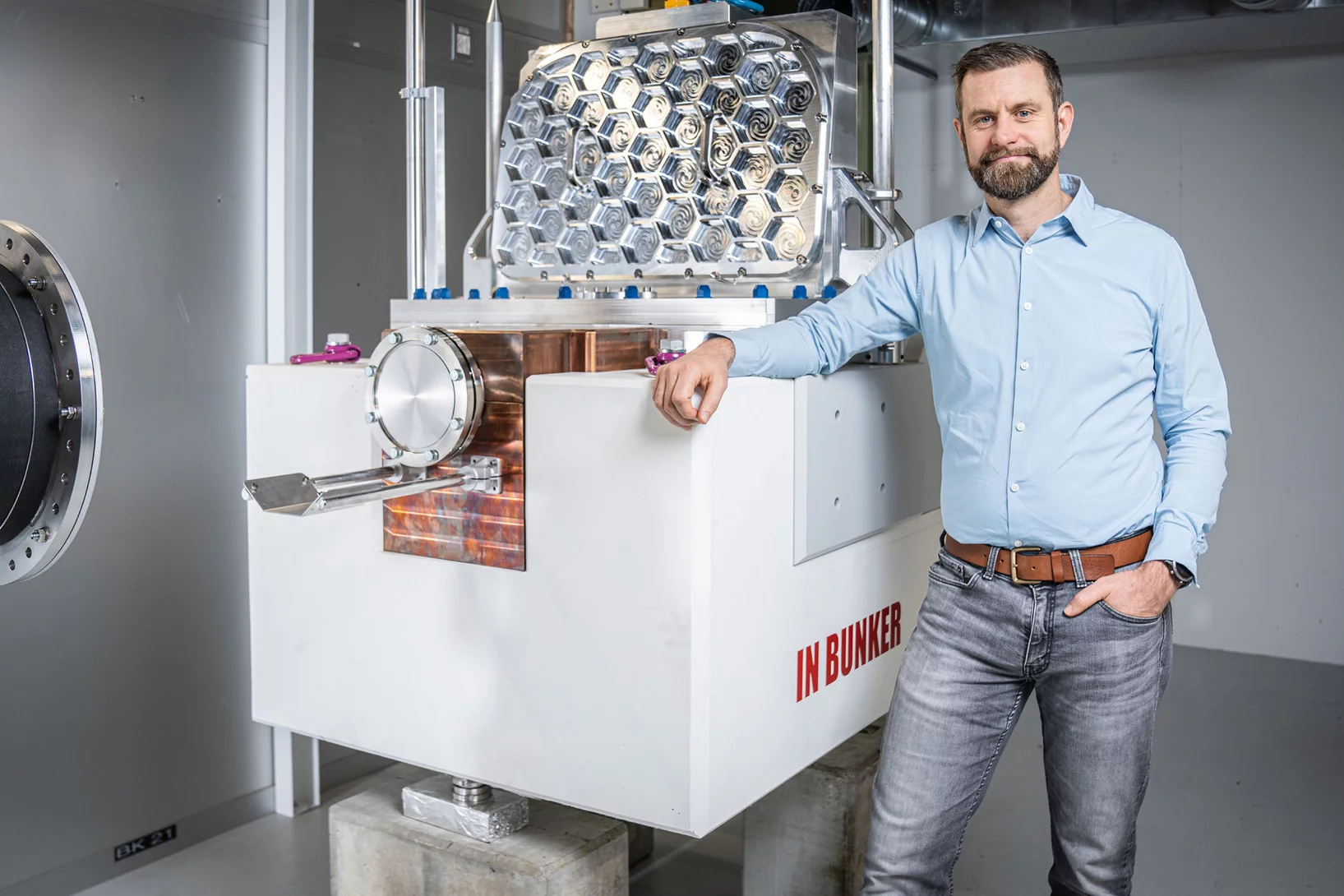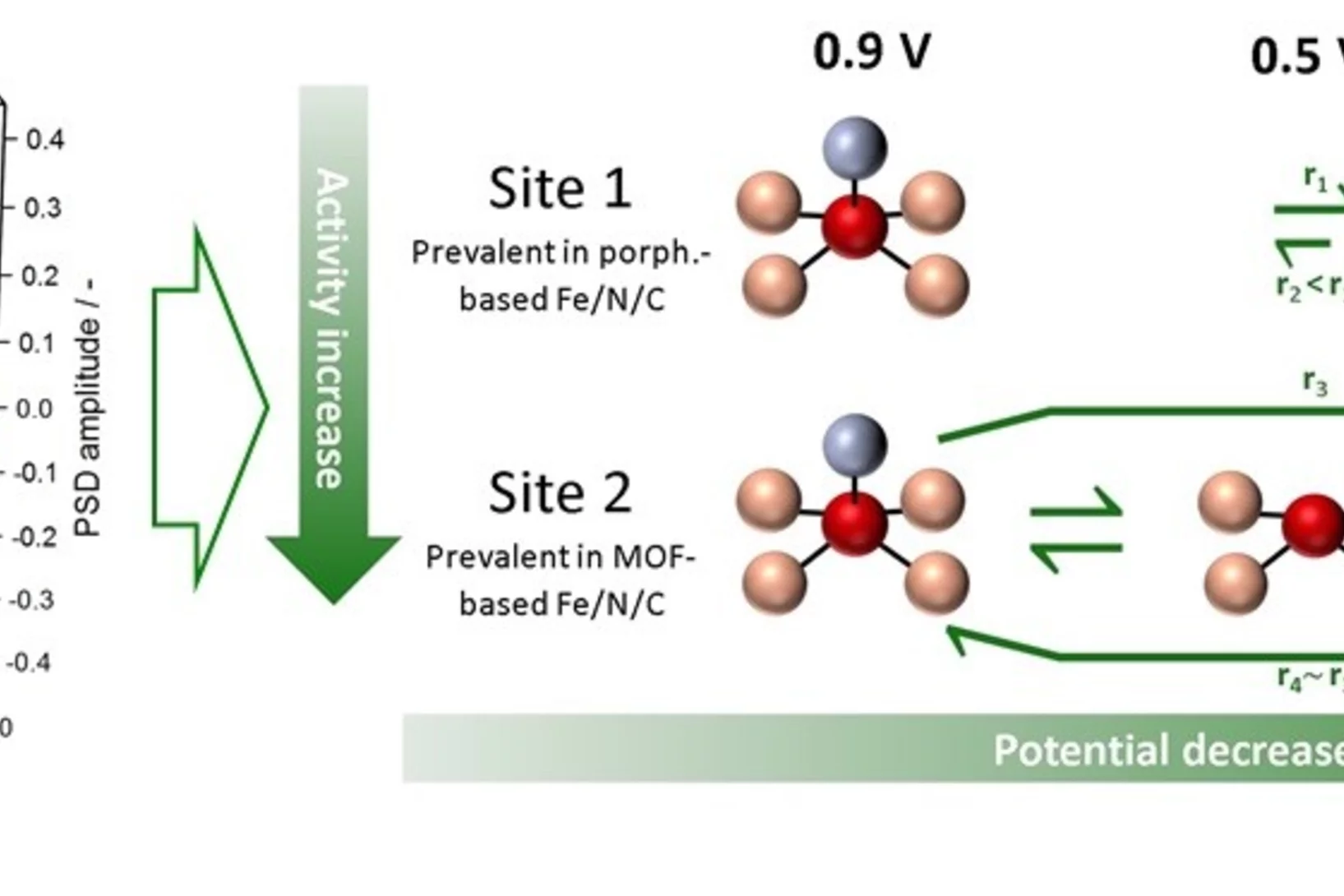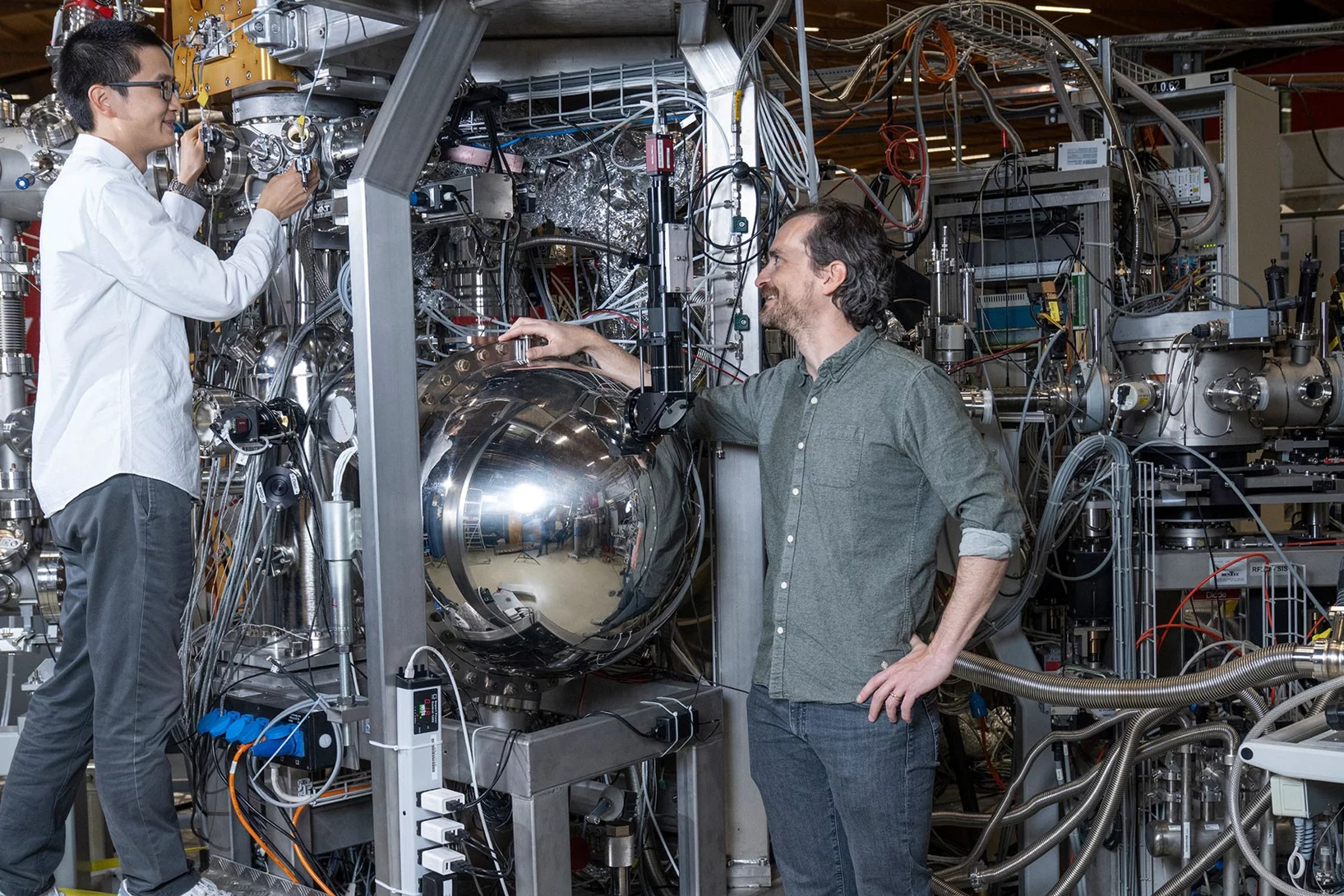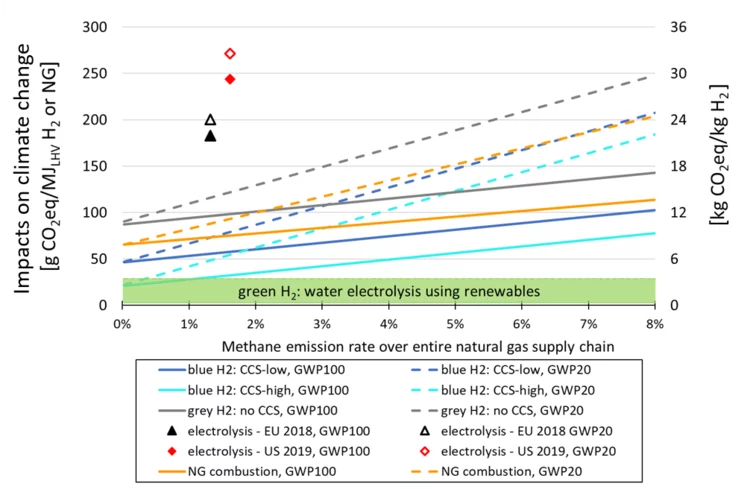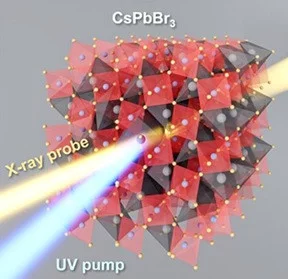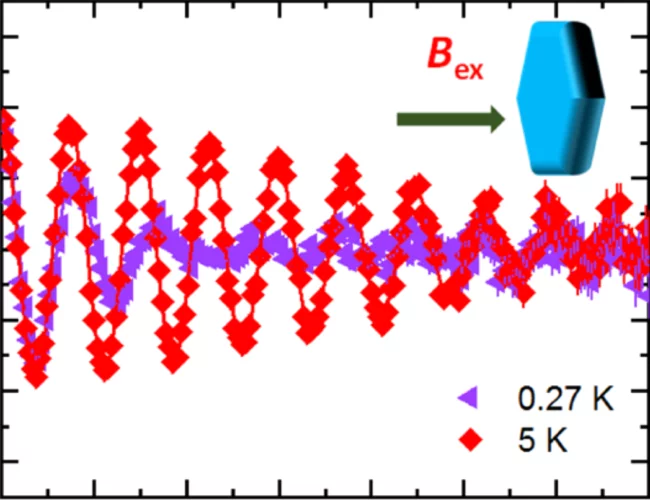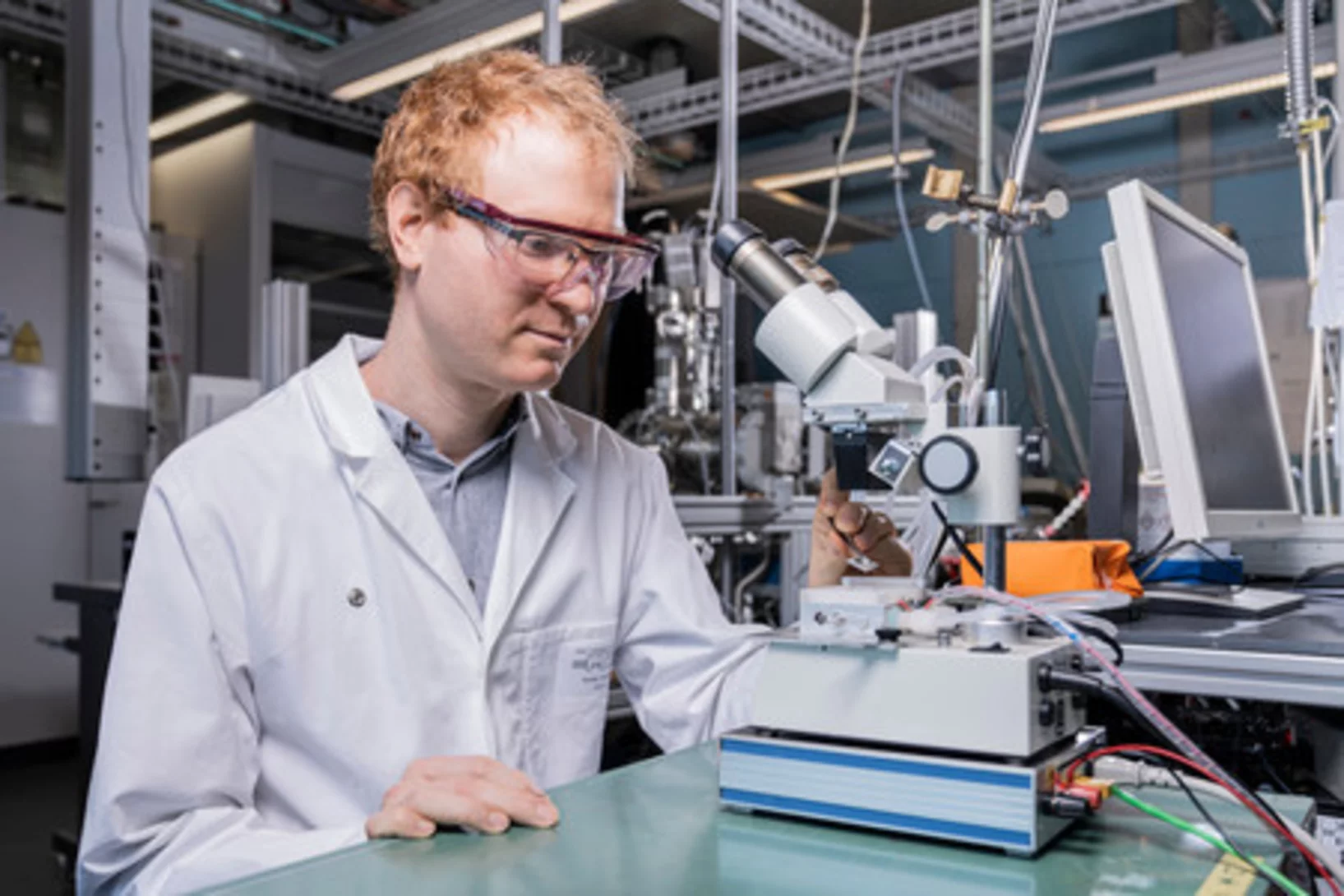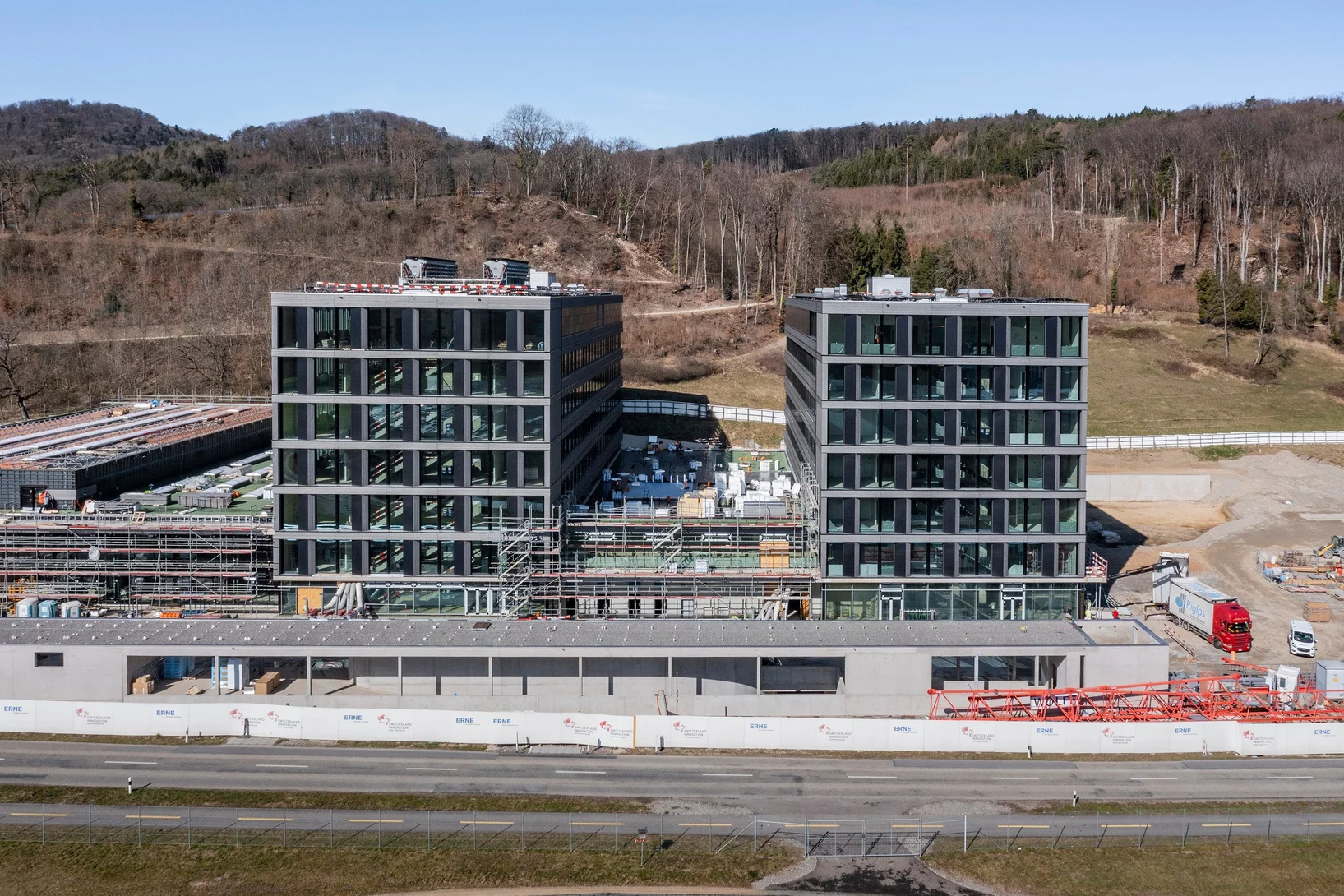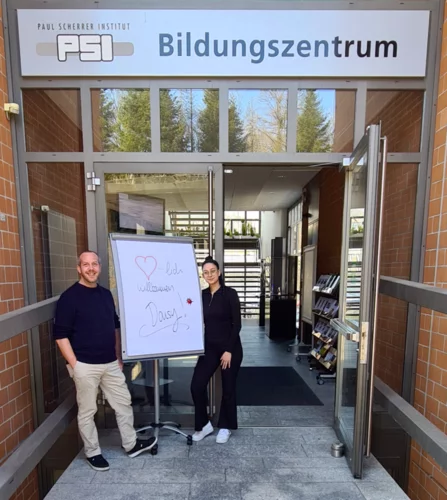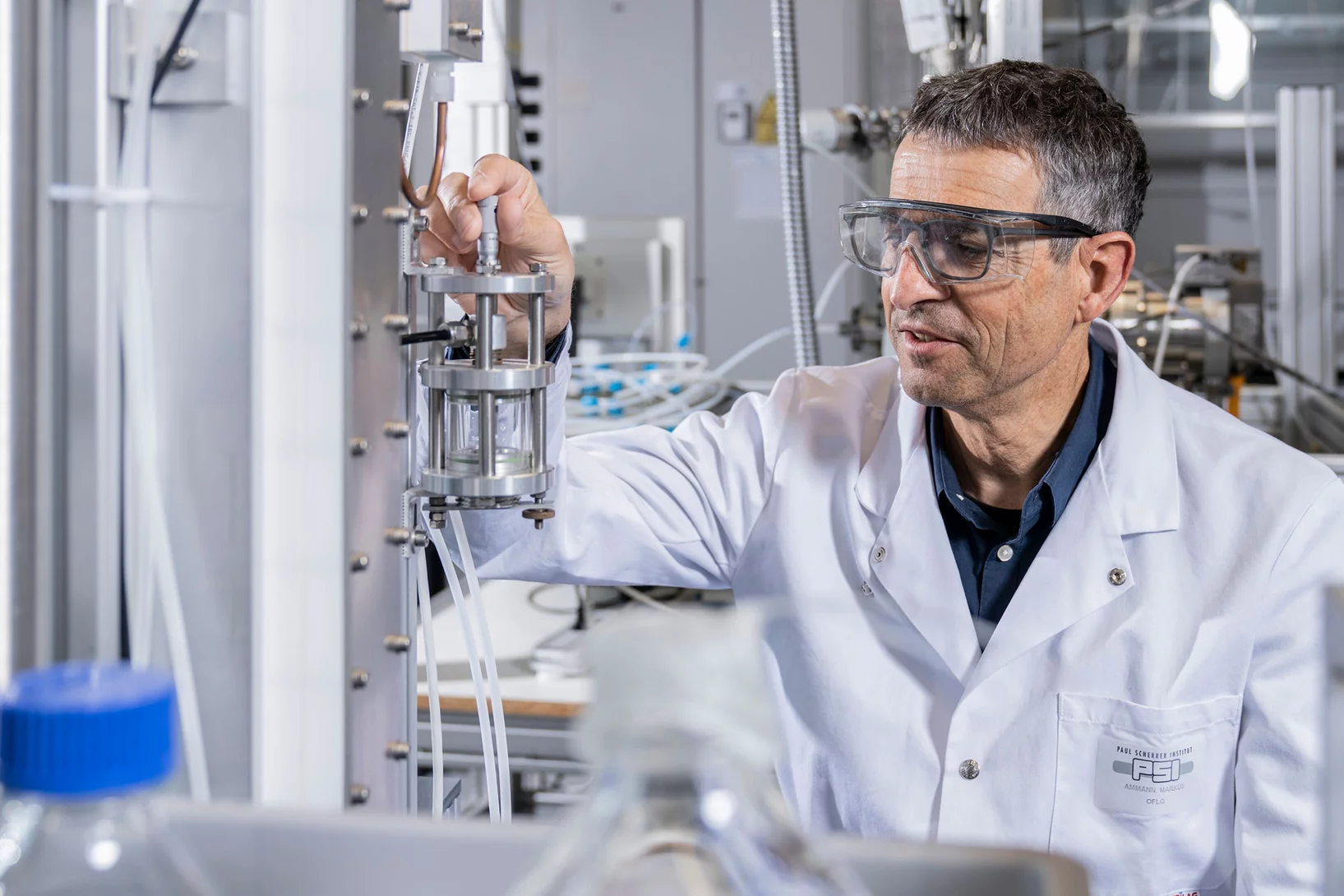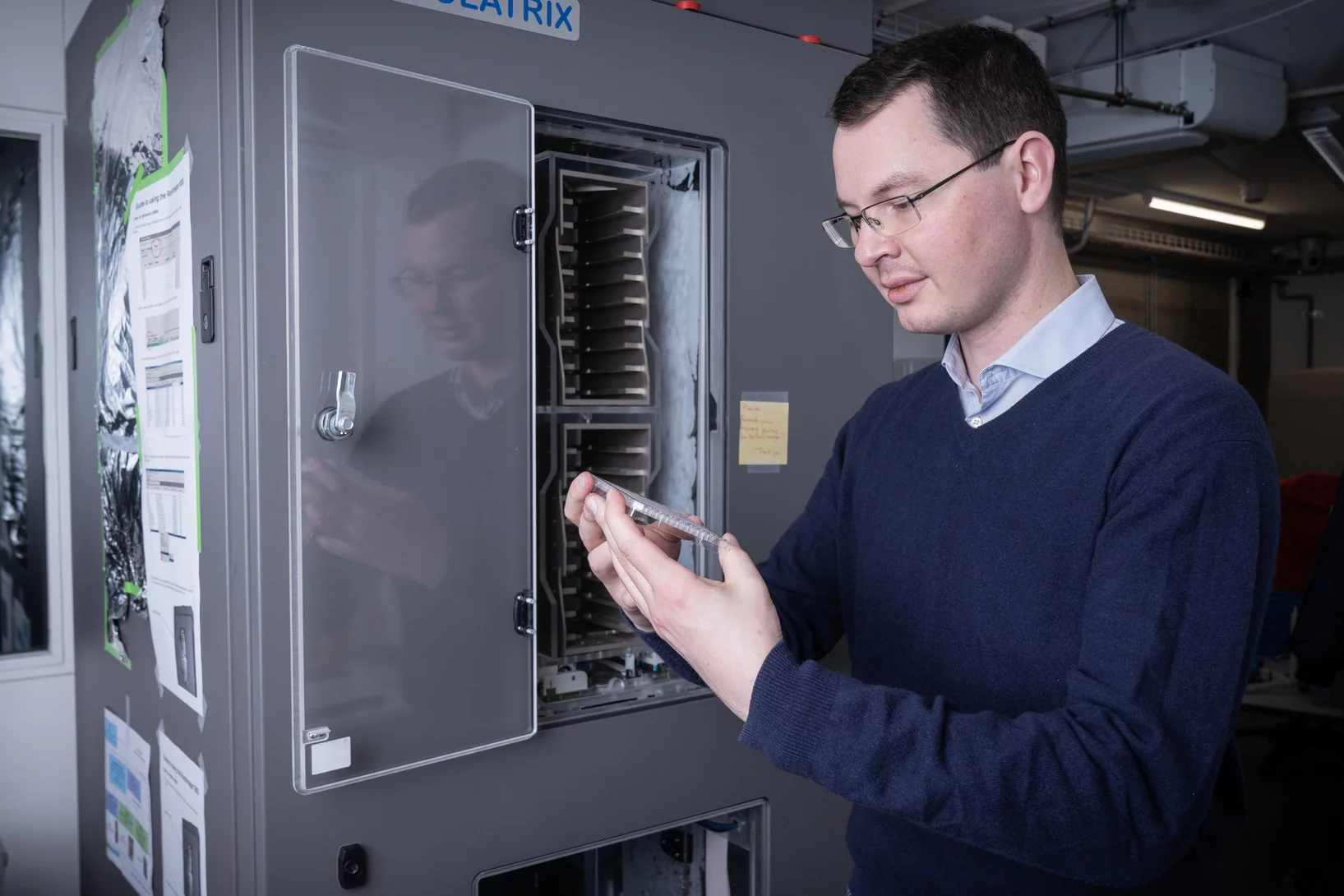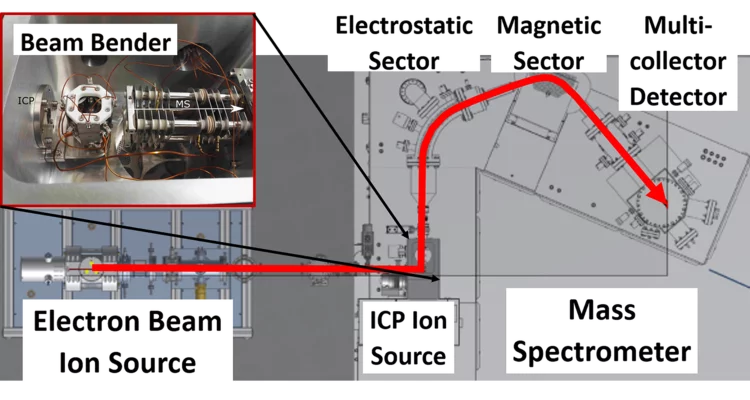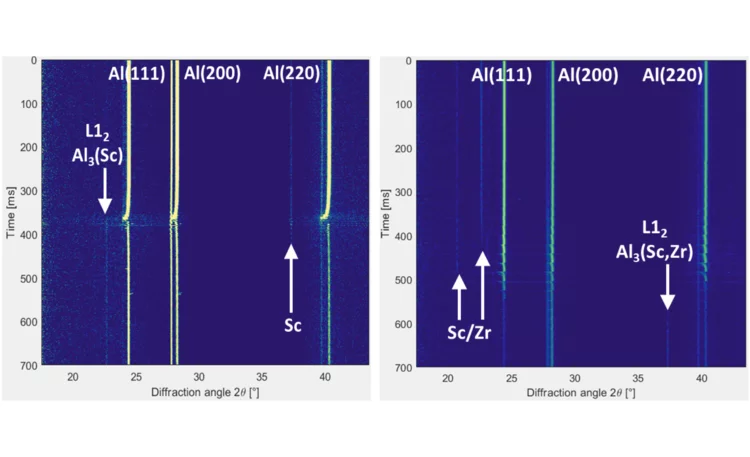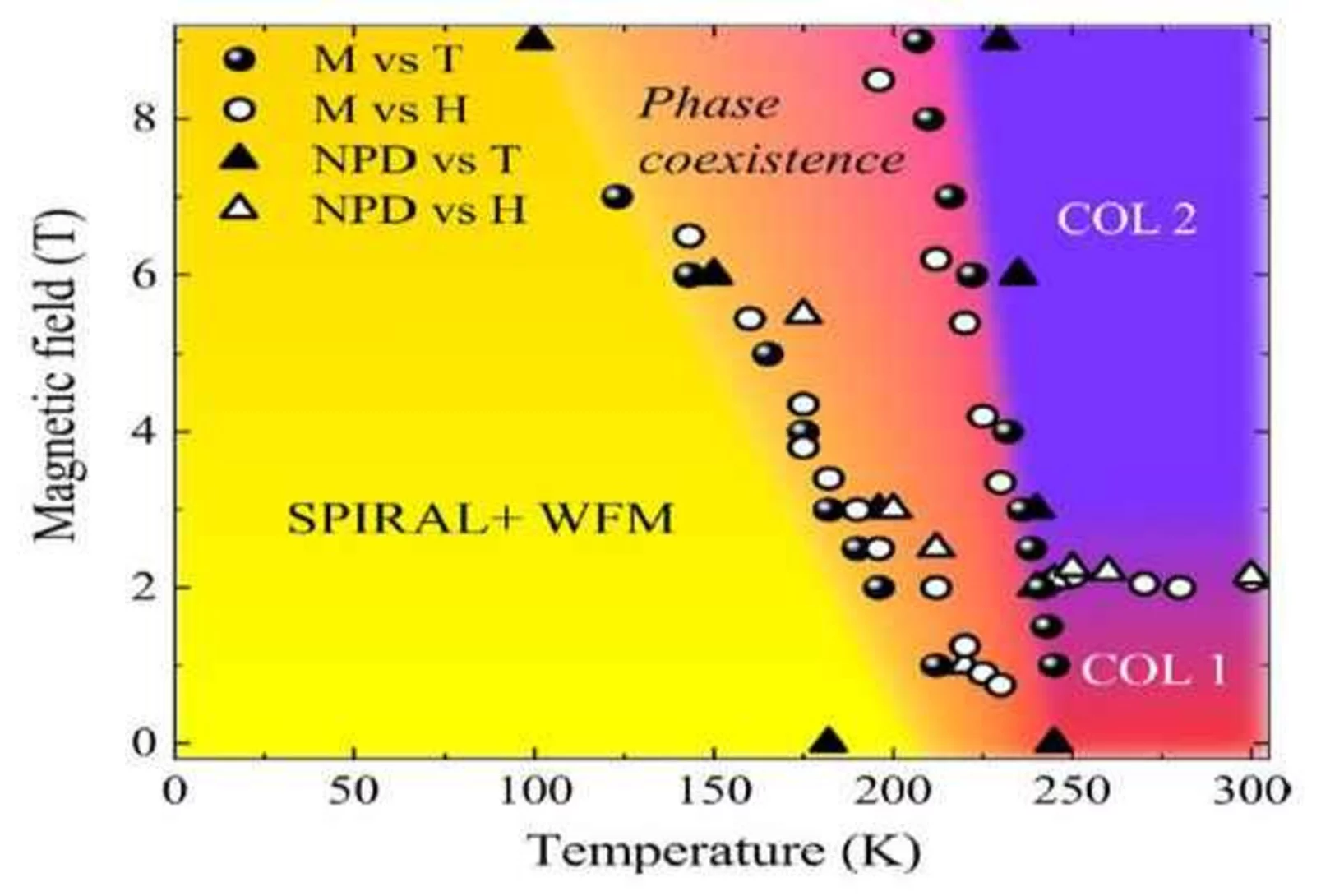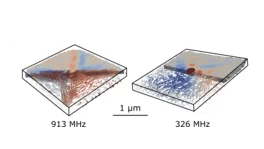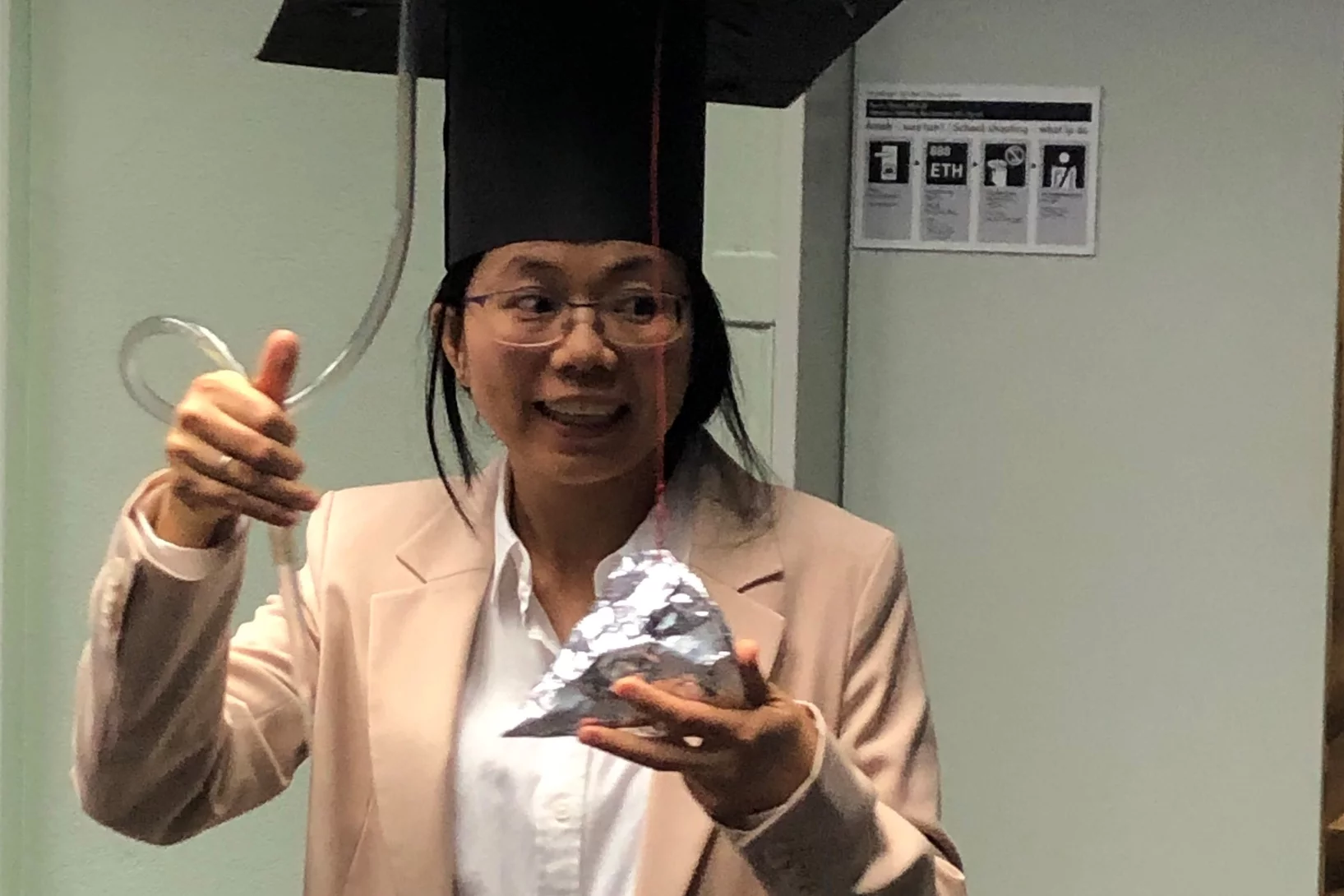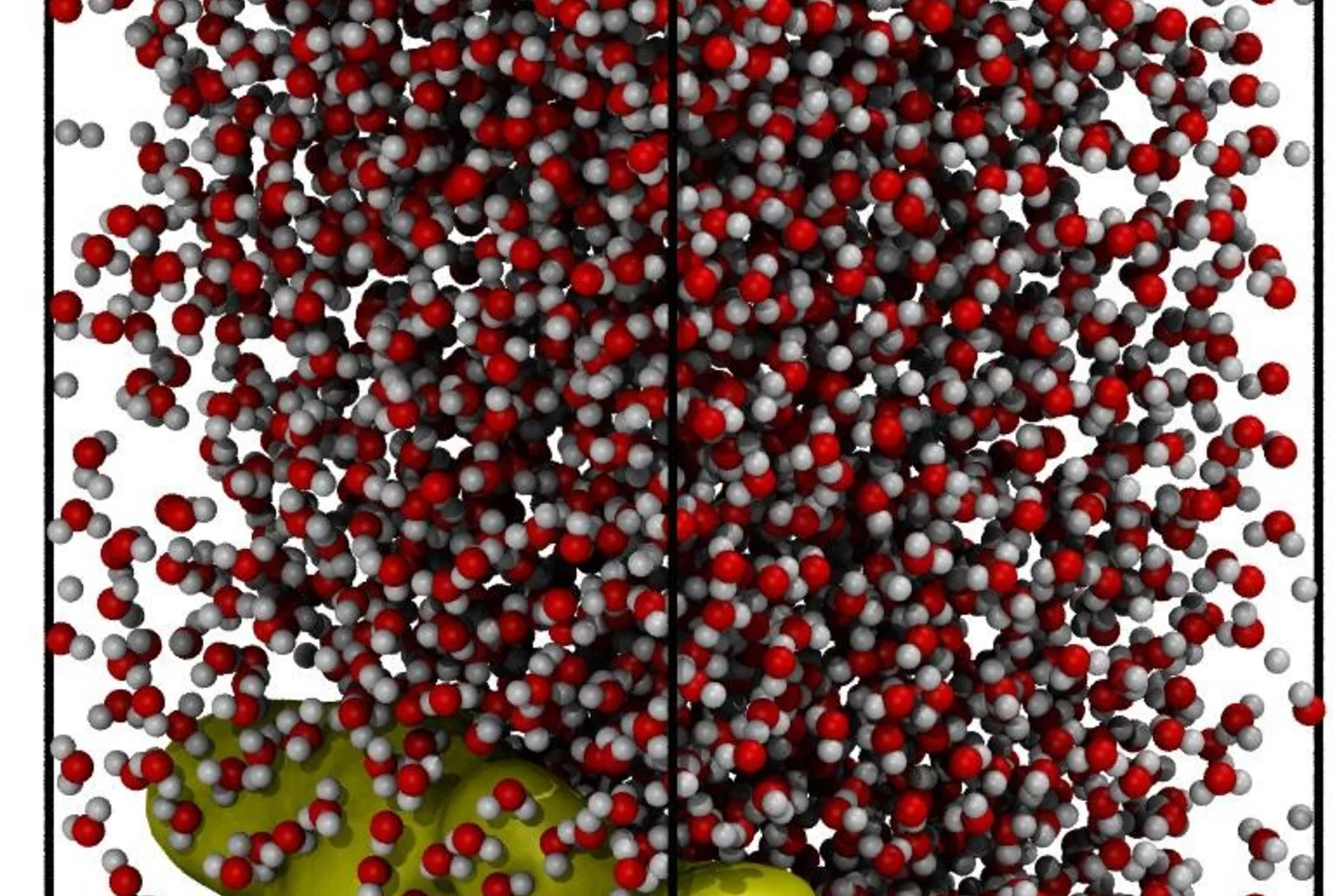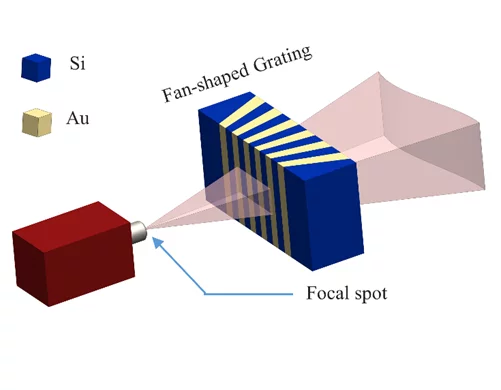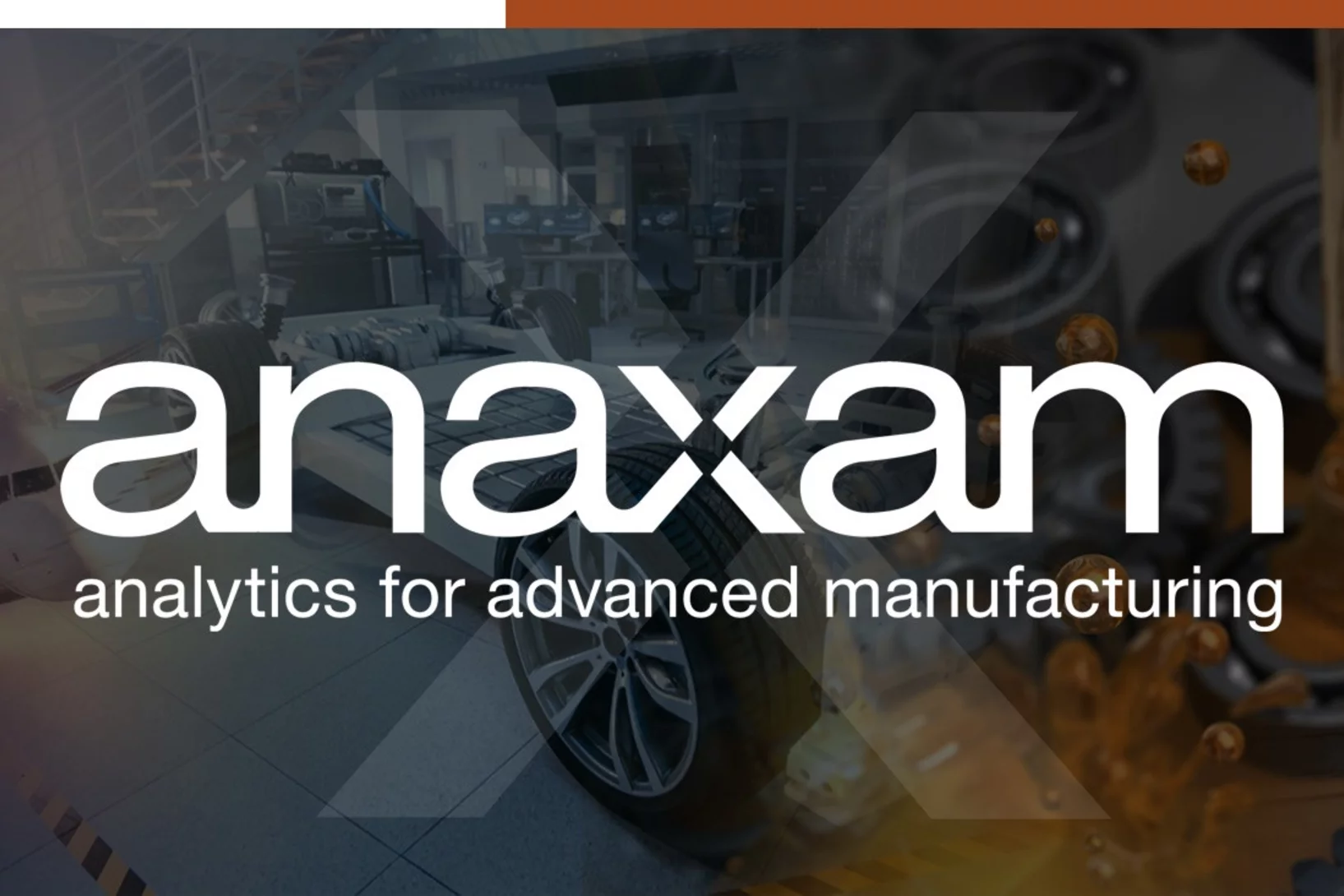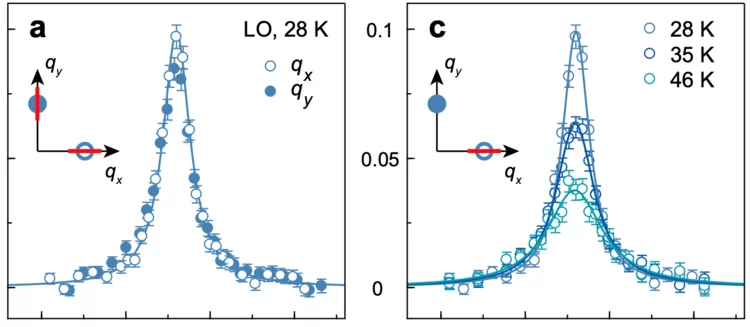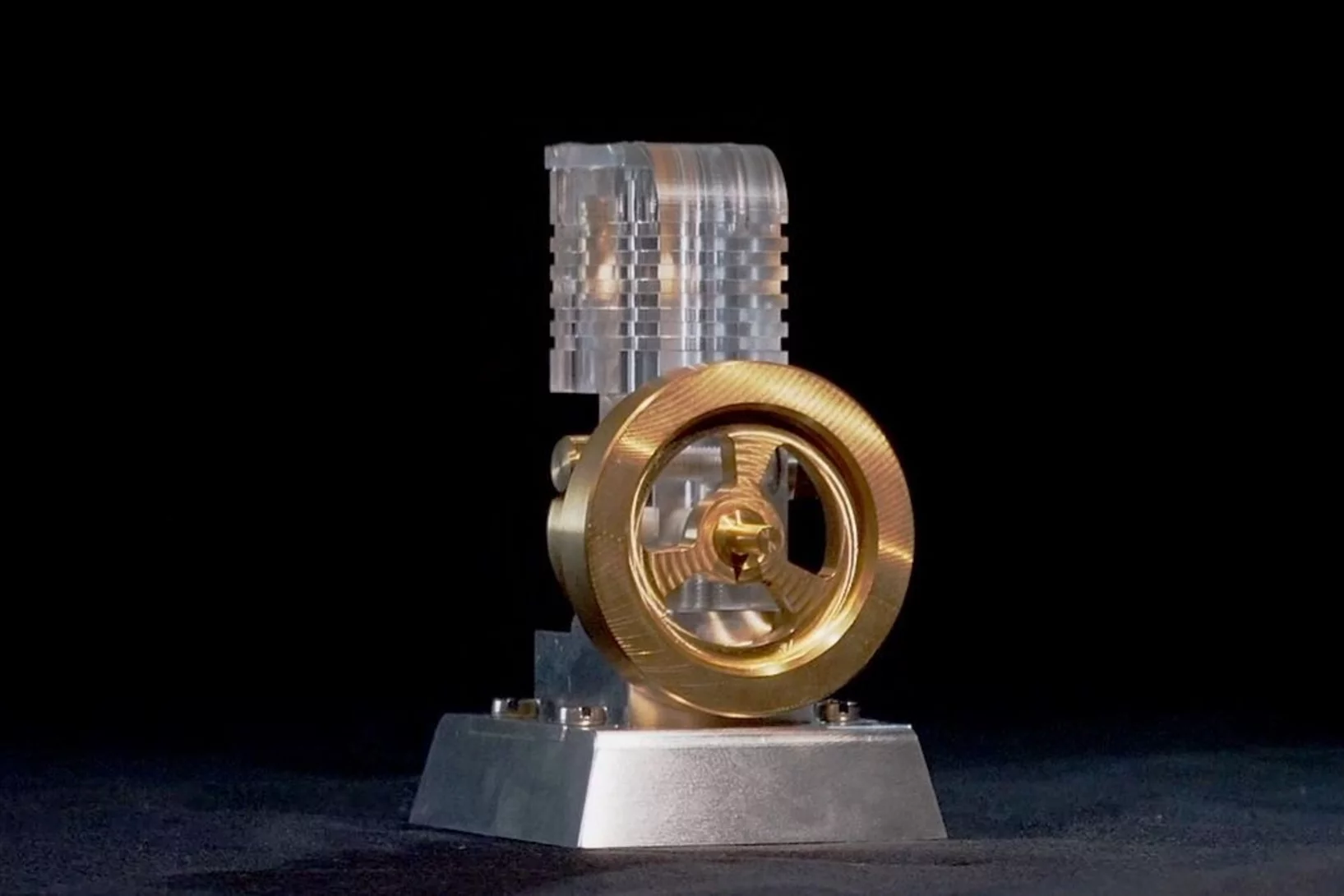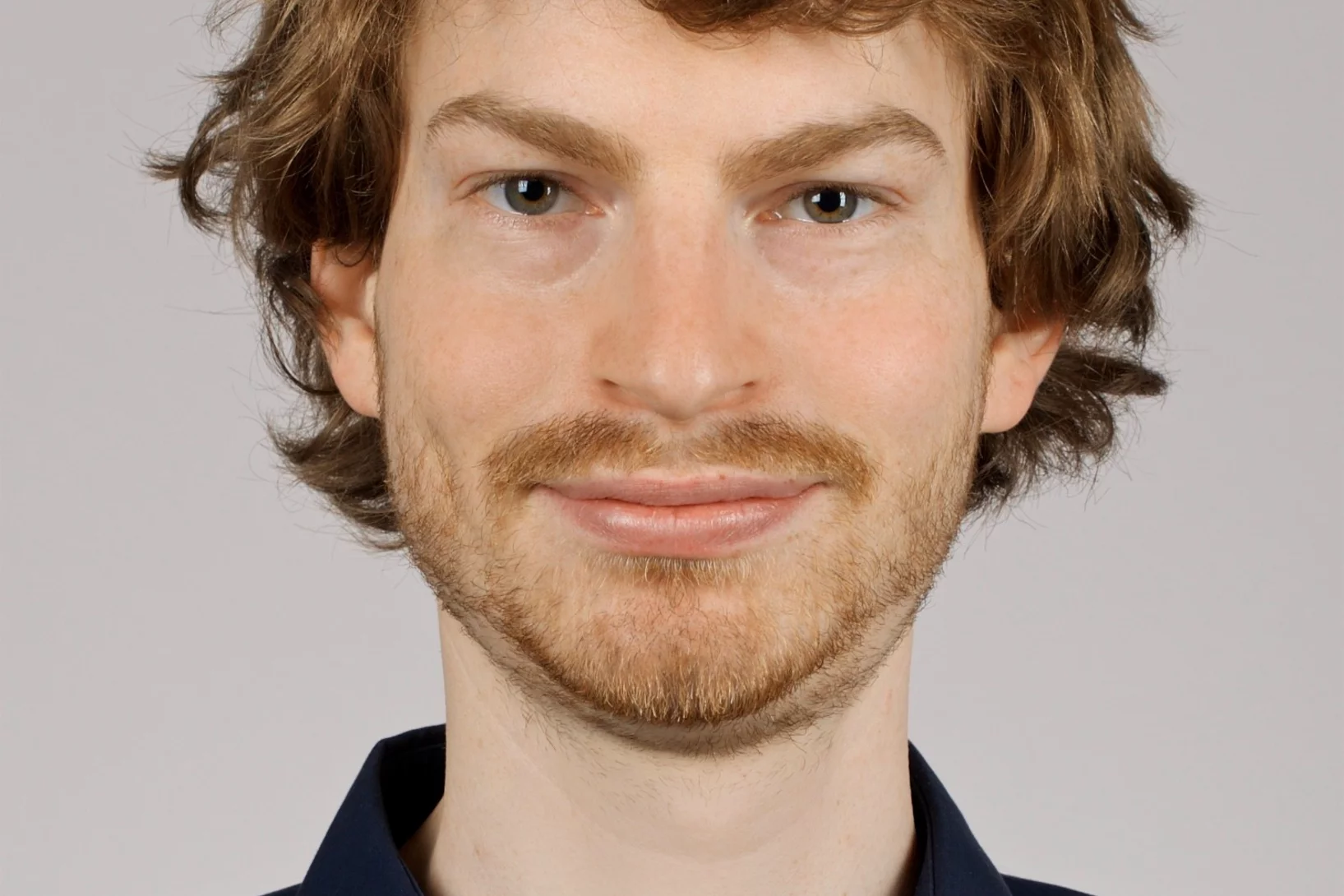Researchers at the Paul Scherrer Institute PSI are looking for answers to essential questions concerning the underlying structures of matter and the fundamental principles of nature. They study the composition and properties of elementary particles – the smallest building blocks of matter – or investigate the structure of biological molecules and how they perform their function. The knowledge gathered in this way opens up new approaches to finding solutions in science, medicine and technology.
Find out more at Overview Fundamentals of Nature
Thinking in different time frames
Marc Janoschek explains the significance of PSI’s involvement in the European Spallation Source.
In situ spectroscopy unveils the structural changes of the sites in single atom catalysts
To improve the performance of single atom catalysts (SACs), the structure of their active sites under operative conditions needs to be better understood. For this, we have performed in situ X-ray absorption spectroscopy measurements using a modulation excitation approach selectively sensitive to the species involved in the electrochemical reactions. This has allowed us to study the structural changes undergone by two types of SACs, and to tie the observed differences to their catalytic activities.
Mu3e Collaboration Meeting at PSI
After two years of virtual meetings, we held our first in-person collaboration meeting at PSI. We discussed the plans for detector construction and quality assurance, detector calibration and early physics analysis.
How I tackled post-PhD imposter syndrome
Kelsey Inouye's job search has given her panic attacks and dented her self-esteem. But she has learned to deal with rejection. This blog post originally appeared as such on Nature's website and was adapted almost 1:1 from there. What Kelsey learned from her time after her PhD confirms what is taught in career counselling sessions at PSI: Focusing only on finding a job ends up being counterproductive.
Rich electronic features of a kagome superconductor
Spectroscopic insights into the electronic structure of a family of kagome metals bolsters understanding of exotic quantum phenomena
Blue hydrogen can help protect the climate
An international group of researchers led by the Paul Scherrer Institute has carried out in-depth analyses of the climate impact of blue hydrogen. This is produced from natural gas, with the CO2 resulting from the process captured and permanently stored. The study concludes that blue hydrogen can play a positive role in the energy transition – under certain conditions.
Quantifying Photoinduced Polaronic and Thermal Distortions in Inorganic Lead Halide Perovskite Nanocrystals
The development of next-generation perovskite-based optoelectronic devices relies critically on the understanding of the interaction between charge carriers and the polar lattice in out-of-equilibrium conditions. While it has become increasingly evident for CsPbBr3 perovskites that the Pb–Br framework flexibility plays a key role in their light-activated functionality, the corresponding local structural rearrangement has not yet been unambiguously identified. In this work the photoinduced lattice changes were investigated using combination of time-resolved and temperature-dependent studies at Br K and Pb L3 X-ray absorption edges and ab initio simulations.
Microscopic evidence for anisotropic multigap superconductivity in the CsV3Sb5 kagome superconductor
The recently discovered kagome superconductor CsV3Sb5 (Tc ≃ 2.5 K) has been found to host charge order as well as a non-trivial band topology, encompassing multiple Dirac points and probable surface states. Such a complex and phenomenologically rich system is, therefore, an ideal playground for observing unusual electronic phases. Here, we report anisotropic superconducting properties of CsV3Sb5 by means of transverse-field muon spin rotation (μSR) experiments.
Light amplification accelerates chemical reactions in aerosols
Aerosols in the atmosphere react to incident sunlight. This light is amplified in the interior of the aerosol droplets and particles, accelerating reactions. ETH and PSI researchers have now been able to demonstrate and quantify this effect and recommend factoring it into future climate models.
Park Innovaare: Construction processes
After the topping-out ceremony of the Park Innovaare took place in autumn 2021 as an important milestone, construction continues to progress according to plan. From 2024, companies and researchers will work together at one place.
Around two and a half years have now passed since the groundbreaking ceremony for Park Innovaare was held in 2019. Since then, the project has taken shape as planned and is well on schedule, despite various challenges such as a pandemic or shortage of raw materials. In the meantime, the scaffolding has been removed from the buildings and the focus of further construction work is on the interior fittings. With more than 35,000 m2 of space, the Park Innovaare offers laboratories, clean rooms and workshops, as well as offices, co-working spaces and meeting rooms - a versatile range of facilities for a wide variety of needs. There will also be meeting rooms to promote exchange between research and industry, as well as a restaurant.
The first tenants, including PSI as the main tenant, are expected to be able to move in at the beginning of 2024. Around 70% of the space has already been let; further customer acquisition is currently underway so that the Park Innovaare ecosystem can be further expanded in the coming months and other companies can benefit from direct access and exchange with the PSI by locating on site.
Grüsse aus dem Bildungszentrum PSI
Ich heisse Daisy und bin KV Lernende am PSI. Seit Ende Februar bin ich in der Rotation und dies beim Bildungszentrum-Team.
Neugier, Anspannung, Erwartungen, Nervosität: All diese Gefühle begleiteten mich beim Abteilungswechsel.
Light amplification accelerates chemical reactions in aerosols
Consideration in future climate models important.
Reconfigurable halide perovskite nanocrystal memristors for neuromorphic computing
Many in-memory computing frameworks demand electronic devices with specific switching characteristics to achieve the desired level of computational complexity. Existing memristive devices cannot be reconfigured to meet the diverse volatile and non-volatile switching requirements, and hence rely on tailored material designs specific to the targeted application, limiting their universality. “Reconfigurable memristors” that combine both ionic diffusive and drift mechanisms could address these limitations, but they remain elusive. Here we present a reconfigurable halide perovskite nanocrystal memristor that achieves on-demand switching between diffusive/volatile and drift/non-volatile modes by controllable electrochemical reactions.
Sprachaufenthalt in England - Salisbury!
"Wer eine Fremdsprache lernt, zieht den Hut vor einer anderen Nation"
How to find anti-cancer agents
PSI researchers have developed a new substance that disables a vital protein in the cell skeleton.
MC-EBIS-ICP-MS – a unique dual Ion Source Mass Spectrometer
This highlight presents a successful, in-house developed integration of an Electron Beam Ion Source (EBIS) able to ionize gases to high charge states with a customized commercial MC-ICP-MS. The successful joining of the two ion flight paths is a milestone towards comprehensive routine analyses of solids, liquids, and gases using THE SAME MASS SPECTROMETER, the latter analyses free from atmospheric contamination. After implementation of an introduction system for gas mass spectrometry, routine analyses will comprise isotope ratio and relative abundance determinations of fission gases in used nuclear fuel. In addition to the unique versatility of the MC-EBIS-ICP-MS, inclusion of the EBIS furthers opens the little-studied field of mass spectrometry of highly charged ions.
Thermal and phase evolution during laser powder bed fusion of Al-Sc-Zr elemental powder blends
The reaction of elemental scandium and zirconium powders with liquid aluminum is observed directly via operando X-ray diffraction during laser 3D printing. This work demonstrates that elemental blends can be used to create fine-grained crack-free Al-alloys and highlights the importance of feature size.
Weak ferromagnetism linked to the high-temperature spiral phase of YBaCuFeO5
The layered perovskite YBaCuFeO5 is a rare example of a cycloidal spiral magnet whose ordering temperature Tspiral can be tuned far beyond room temperature by adjusting the degree of Cu2+/ Fe3+ chemical disorder in the structure. This unusual property qualifies this material as one of the most promising spin-driven multiferroic candidates. However, very little is known about the response of the spiral to magnetic fields, crucial for magnetoelectric cross-control applications. Using bulk magnetization and neutron powder diffraction measurements under magnetic fields up to 9 T, we report here a temperature-magnetic field phase diagram of this material. Besides revealing a strong stability of the spiral state, our data uncover the presence of weak ferromagnetism coexisting with the spiral modulation. Since ferromagnets can be easily manipulated with magnetic fields, this observation opens new perspectives for the control of the spiral orientation, directly linked to the polarization direction, as well as for a possible future use of this material in technological applications.
Into the fourth dimension: time-resolved soft X-ray laminography
Combining time-resolved soft X-ray STXM imaging with magnetic laminography, researchers were able to investigate magnetization dynamics in a ferromagnetic microstructure resolved in all three spatial dimensions and in time. Thanks to the possibility of freely selecting the frequency of the excitation applied to the magnetic element, this technique opens the possibility to investigate resonant magneto-dynamical processes, such as e.g. magnetic vortex core gyration and switching, and spinwave emission.
Shuzhen Chen successfully defended - congratulations
On 7th April 2022 Shuzhen Chen successfully defended her PhD entitled “Multiphase kinetics and chemistry at halide solution-air interfaces" at ETH Zürich.
Deciphering the molecular mechanism of water boiling at heterogeneous interfaces
Water boiling control evolution of natural geothermal systems is widely exploited in industrial processes due to the unique non-linear thermophysical behavior. Even though the properties of water both in the liquid and gas state have been extensively studied experimentally and by numerical simulations, there is still a fundamental knowledge gap in understanding the mechanism of the heterogeneous nucleate boiling controlling evaporation and condensation. In this study, the molecular mechanism of bubble nucleation at the hydrophilic and hydrophobic solid–water interface was determined by performing unbiased molecular dynamics simulations using the transition path sampling scheme. Analyzing the liquid to vapor transition path, the initiation of small void cavities (vapor bubbles nuclei) and their subsequent merging mechanism, leading to successively growing vacuum domains (vapor phase), has been elucidated. The simulations reveal the impact of the surface functionality on the adsorbed thin water molecules film structuring and the location of high probability nucleation sites.
Broadening the field of view with a fan-shaped source grating
The orientation mismatch between the cone beam of an X-ray tube and the grating lines in a flat substrate remains a big challenge for laboratory grating-based X-ray interferometry, since it severely limits the imaging field of view. To solve this problem, we fabricated fan-shaped G0 source gratings by modulating the electric field during the deep reactive ion etching of silicon. With local electric field modulation in plasma we can etch high aspect ratio fan-shaped gratings that match the X-ray cone beam emission of a tube source. This new technology replaces the grating bending and allows a more compact design with larger field of view. Our work have recently been published in Applied Surface Science.
μSR2020 conference update
The long delayed MuSR2020 conference will run from Monday 29th August to Friday 2nd September, 2022. An in-person meeting is planned, which will be held at the Science and Technology Campus, University of Parma. Invited speakers include Bruce Gaulin, Giacomo Ghiringhelli, Reizo Kato, Ioan Pop, Jorge Quintanilla, Roberta Sessoli, Martin Wilkening and Reiner Zorn
A look into the magnetic future
PSI researchers are the first to observe a specific behaviour of magnetic ice.
Industry-Event: ANAXAM - Innovation and competitive advantages through Advanced Manufacturing
ANAXAM offers industry access to advanced analytical methods using neutron and synchrotron radiation (X-rays) at the Paul Scherrer Institute (PSI)
In a wide range of application fields, ANAXAM supports industry and SMEs in improving materials, products and processes in a wide range of application fields, thus strengthening their competitiveness and innovative power.
The event is organised and held jointly with KMU Swiss (event language: German).
Register for the event and learn how your company can also benefit from collaborating with ANAXAM:
When: 28th April 2022, starting at 4:00 pm
Where: PSI West, Auditorium
Uniaxial pressure induced stripe order rotation in La1.88Sr0.12CuO4
Static stripe order is detrimental to superconductivity. Yet, it has been proposed that transverse stripe fluctuations may enhance the inter-stripe Josephson coupling and thus promote superconductivity. Direct experimental studies of stripe dynamics, however, remain difficult. From a strong-coupling perspective, transverse stripe fluctuations are realized in the form of dynamic “kinks”—sideways shifting stripe sections. Here, we show how modest uniaxial pressure tuning reorganizes directional kink alignment.
CAD-CAM
Aus Skizzen und Zeichnungen fertigten wir mit Hilfe von unserer brandneuen Bearbeitungssoftware und unseren CNC - Maschinen einen funktionierenden Druckluftmotor.
New group member Dr. Paul Leidinger
We would like to welcome Paul Leidinger who started on Friday, April 1.
Paul is a PostDoc working for both, the Laboratory for Catalysis and Sustainable Chemistry and the Electrochemistry Laboratory for the next 24 months. Paul is going to work on the catalytic and electrocatalytic reduction of carbon dioxide on silver surfaces.
COVID-19: Practical information for PSI users
From 1 April 2022 several safety measures against COVID-19 have been lifted at PSI.
Kick-Off Event: FEMSPIN - Promoting spin-off activities of female academics
This project launched by Swissuniversities is dedicated to the promotion of spin-off intentions and activities of women. There will be a kick-off on May 9 at the FHNW in Olten. Deadline for registration: April 15, 2022. Follow this link for further information.

